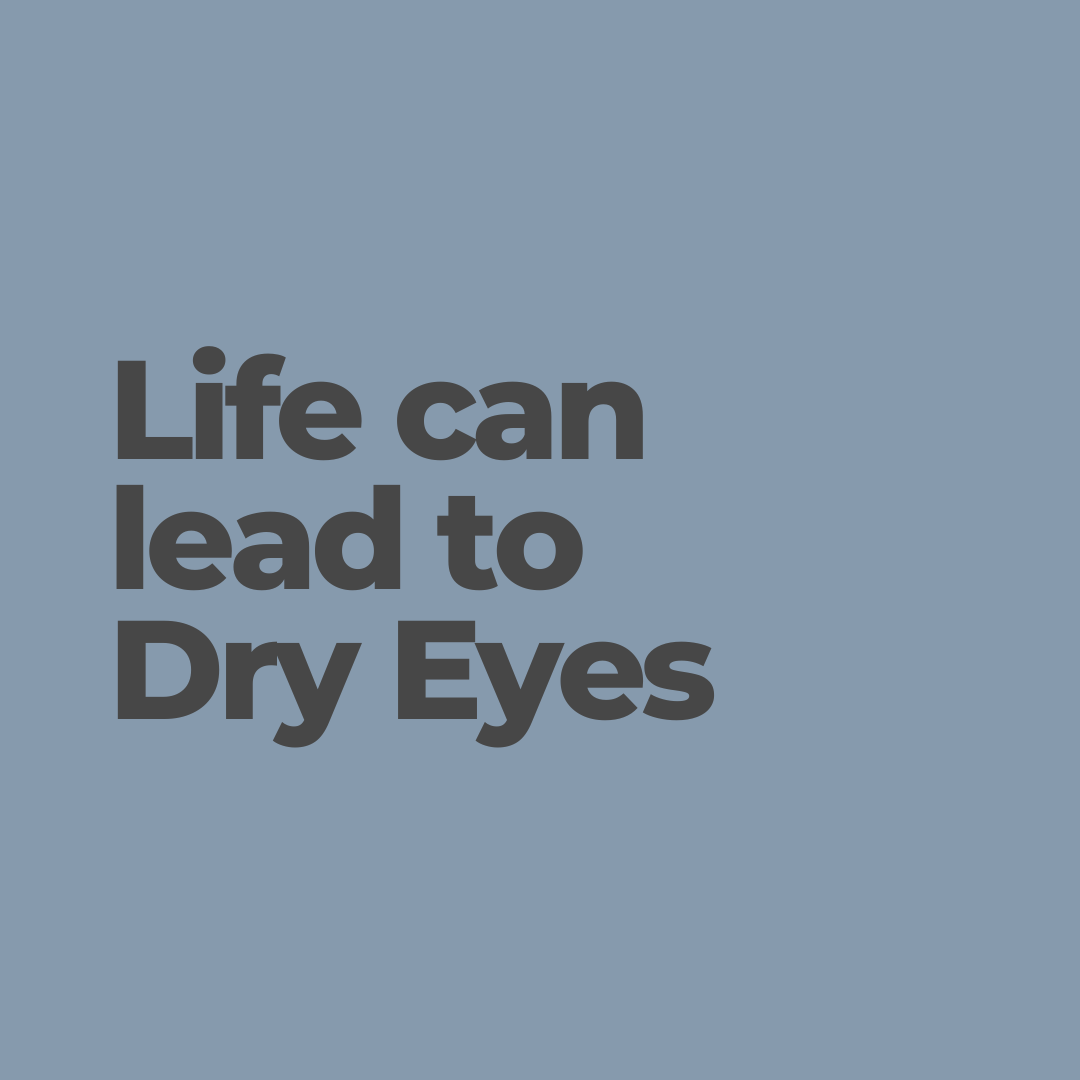According to the Vision 2022 Index, over 85% of Australians have experienced dry eyes. Of those affected, 55% developed the condition following the beginning of the pandemic, and it is here to stay.
These statistics are worrying, as we know that this condition only gets worse if we don't take action.
But it's not just the dry eyes that people are usually concerned about; it is the social consequences, such as self-esteem, work productivity, and embarrassment.
Who gets dry eyes?
Everyone.
One in three visits to eye care clinics are related to symptoms of dry eyes.
If you look at a screen, spend time outside, wear cosmetics, wash your face, get facials, take certain medications, have a diagnosed autoimmune disease, suffer from allergies, have a diagnosed vitamin deficiency, wear contact lenses, have had refractive surgery, use hormonal contraceptives, are pregnant, and/or are experiencing hormonal changes from menopause, you could develop dry eye symptoms.
The risks to dry eye disease are many, but you don't have to live that way.
When these symptoms become persistent and get in the way of your life, that’s when you have dry eye disease.
What are the symptoms of Dry Eye Disease?
Everyone experiences dry eye symptoms differently but the typical symptoms are:
- Redness
- Pain
- Irritation
- Gritty feeling, or foreign body sensation
- Dryness
- Blurred vision
- Tearing or watery eyes
- Burning or stinging of the eyes
- Light sensitivity
- Eye fatigue
What are the causes of dry eyes?
Dry eye disease (DED) is no one's fault! Understanding the causes of DED involves recognizing two main factors: decreased tear production (aqueous deficiency) and increased tear evaporation (evaporative).
- Decreased Tear Production: Natural tears are produced by the lacrimal gland. Infection and inflammation can disrupt the lacrimal gland's function, leading to decreased tear production.
- Increased Tear Evaporation: The tear film consists of three layers: the mucin layer, the aqueous layer, and the lipid layer. The mucin layer binds to the corneal surface, while the aqueous layer rests on top of it. The lipid layer is the outermost layer.
These layers work together to stabilize the tear film and prevent tear evaporation. Damage to the corneal surface can compromise its binding to the mucin layer. Insufficient production of oil for the lipid layer, as seen in meibomian gland dysfunction, can also result in an unstable tear film.
Additional Factors:
- Contact Lenses: The use of contact lenses is a common cause of DED. Contacts can directly affect the cornea or reduce its sensitivity, leading to chronic dry eye symptoms.
Risk Factors for Dry Eye Disease
Certain factors increase the risk of developing dry eye syndrome, including:
- Age above 50 years old
- Female gender
- Medications such as oral antihistamines, antidepressants, decongestants, diuretics, or birth control pills
- Hormonal changes due to menopause
- Autoimmune diseases like thyroid eye disease and rheumatoid arthritis
- Medical conditions such as cancer and diabetes
- Poor nutrition (low vitamin A)
- Environmental factors (high pollution or low humidity)
- Occupational factors (prolonged use of computer screens)





